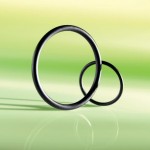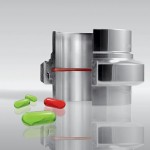Certification of modern elastomer sealing substances based on FDA or USP Class VI guidelines is often insufficient today. The materials must also be able to cope with interactions occurring in the production process. It is a difficult balance, and only a few sealing substances are equal to it. Manufacturing competence, experienced application consultancy and independent external tests offer the best possible basis for reliable and satisfactory sealing results.
Michael Krüger
In the modern foodstuffs, cosmetics and pharmaceutical industries, requirements become ever more stringent as a result of improvements in the production process. All materials, for example, that come into contact with the foodstuffs being manufactured in the course of the production process must comply with the applicable standards to obtain marketing authorisation (e.g. FDA, USP, EC Directive 1935/2004). Yet such marketing authorisation alone is frequently insufficient, as has been shown in practice.
Besides general media resistance – for use in media with a fat content for example, or in connection with aromatic substances and etheric oils, both critical for elastomer seals – sealing materials must be capable of being utilised in the CIP/SIP procedures that are standard today. The interactions between the media to be sealed off and the disinfectants and cleaning agents used, some of them highly aggressive, as well as the hot water vapour employed in the sterilisation process (sometimes at temperatures of up to 149 °C ), result in enormous stress on the materials. This is why many elastomer seals fail permanently. More frequent service intervals, an increase in maintenance work or even disruptions in production may result, with costly consequences.
As a result of the progressive reduction or even elimination of preserving agents, the CIP cleaning processes that deal with soiling arising in the course of the production process in the pipes, valves, pumps, etc. must be based on ever more effective cleaning agents. At the same time, we can observe that production cycles are being shortened in favour of increased productivity. The cleaning process must therefore also be cut short. This is achieved with the help of more and more aggressive CIP media. From the point of view of production, this is a good solution; for the manufacturer of the sealing materials, it is a major challenge.
In the pharmaceuticals industry and in biotechnology, fully desalinated (FD) and WFI (Water For Injection) waters are increasingly becoming standard. WFI water subjects materials to stress and may damage them by dissolving the mineral content of the substances with which it comes into contact. For example, WFI water can make concrete porous and useless in a short space of time. FD water is a preliminary stage of WFI water and is likewise used in production, but it is not quite as aggressive as WFI water. Both media subject elastomer materials to enormous stress. Few sealing materials are capable of resisting this aggression in the long term while at the same time being in possession of the necessary FDA and USP Class VI authorisations. This is why users and designers are increasingly calling for documentary evidence of a defined degree of resistance on the part of the sealing substances they use.
Sealing solutions for a wide range of uses
The independent producer C. Otto Gehrckens (COG) has developed two suitable materials for this kind of application. These are the EPDM substance AP 302 and the FEPM substance Vi 602. Both substances have been developed for use in the foodstuffs and pharmaceutical industries, and come with FDA 21 CFR § 177.2600 and USP Class VI (Chapter 88) approval. In the USP test, the substances were moreover successfully tested in the highest class (up to 121 °C – not, as is frequently the case on the market, just up to 70 °C). Both substances have also been successfully subjected to practical tests with WFI water and have a certification to that effect from Ecolab, one of the leading producers of CIP media. They are both therefore absolutely reliable, even when used in connection with SIP processes, and can be regarded as suitable for use in critical areas in an exceptionally wide range of contexts.
With this dual package, COG offers a combination of materials which together serve to cover most applications used in these industries. Only in a few exceptional situations it has been impossible to meet isolated requirements. The EPDM compound AP 302 was specially designed for use with liquid media or media with a low fat content. The viable temperature range extends from -40 to +150 °C. If the media used has a fat content in excess of 30 %, the FEPM material Vi 602 is advised. This material can also show excellent resistance to aromatic substances and etheric oils, and can be utilised in a temperature range from -10 to +230 °C.
Resistance is always temperature-dependent
Generally speaking, the designer or user has to take into account the fact that the resistance of elastomer sealing materials is dependent on the actual temperatures at which they will be used. Thus, it may happen that at lower temperatures their resistance is adequate in relation to the medium needing to be sealed, but it is insufficient when the temperature rises to any significant degree. As a result, it is very difficult to make a general statement without any reservations about the ways in which such materials may be used. The only thing that can be done in advance is to subject the materials to a wide range of different tests, to establish that they are basically safe – and to seek the advice of experienced application engineers, with a view to finding the best possible sealing solution for a given context.
COG, for example, has had its materials tested in close cooperation with the CIP media producer Ecolab, in order to achieve test results that will be as meaningful as possible. This involved testing seal rings in various immersion trials. These tests provide crucial data for users and designers, as the results of the trials tell the specialist about the fundamental suitability of a material for the purpose envisaged. Very often, these tests are absolutely sufficient, and the sealing materials can be utilised directly without any further elaborate testing being required. However, if the material is used in a borderline area or in a situation that deviates considerably from the test parameters, expert advice from the engineers in COG’s Application Technology division may be of great benefit. As a result of their experience, they are generally able to give designers and users well-founded recommendations without any need for further intensive and costly testing. Owing to the great number of projects in which they are involved, their wealth of experience continues to grow every day and is hence adapted to market requirements. Moreover, it is not uncommon for the consultants to be one step ahead of market expectations.
Field trials under real conditions
Immersion trials and tests using special equipment are not always sufficient, as in the best case scenario realistic conditions can only be simulated. It makes no difference whether the sealing materials are to be used for the first time in a freshly designed system or in an existing facility, or whether their implementation is expected to result in an extension of the service interval or in a cost reduction with the same operational performance. As practically all production systems in the foodstuffs, cosmetics and pharmaceutical industries have their own unique structure, only appropriate field trials under real conditions on the customer’s premises can provide absolutely conclusive results. In practice, test samples are installed in existing production facilities or prototypes and the seals tested under real conditions, which may be continued over a standard period of use. Only this kind of practical test can demonstrate the true potential of a new material for the individual application envisaged.
As well as aspiring to FDA and USP Class VI authorisation, seal manufacturers are thus increasingly entering into partnership with companies in the relevant industries, with a view to testing their materials under realistic production conditions. COG’s two new materials – AP 302 and Vi 602 – have both been tested in cooperation with a highly regarded customer in the pharmaceuticals industry, and have successfully demonstrated their resistance to FD and WFI water.
Online-Info www.cpp-net.com/2210403
Share:









